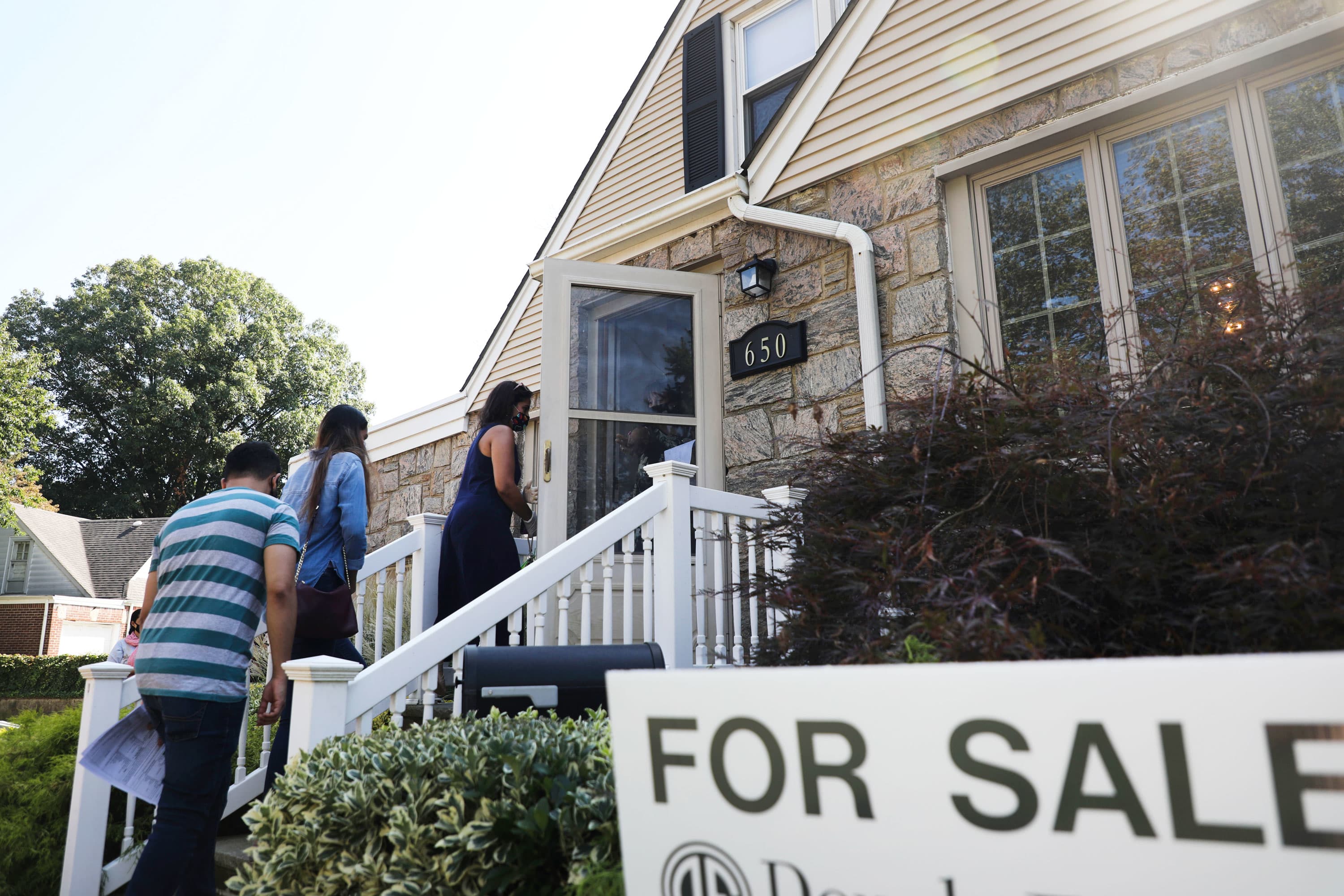People walk into a house for sale in Floral Park, Nassau County, New York, the United States, on Sept. 6, 2020. Home buyers eying for cozy backyards and more office space are staging bidding wars in the suburbs surrounding New York City amid the spread of the COVID-19 pandemic.
Wang Ying | Xinhua News Agency | Getty Images
As some Americans flee cities and move into suburban or rural areas during the coronavirus pandemic, some analysts are predicting home projects and repairs will shift from a pandemic-induced trend to long-term habit.
That could add up to more sales for Home Depot, Lowe’s and other retailers with wide variety of home improvement items, from paint and tools to kitchen appliances, according to a Wells Fargo Securities research note. Those retailers have already seen strong sales and growing profits during the pandemic, as Americans spend more time in their homes and spend dollars they would have otherwise doled out to restaurant bills or summer vacations.
The suburban shift could also benefit auto-focused retailers, such as Carvana, AutoZone, O’Reilly Automotive and Advance Auto Parts, according to the note.
In the research note, Wells Fargo senior equity analyst Zachary Fadem spelled out factors that have driven some people out of cities. Among them, he said, about 65% of early Covid-19 cases were concentrated in dense cities. People have sought out more space as they work and learn at home and as aspects of city life from public transit to high-end restaurants are unavailable or unappealing.
He pointed to recent earnings reports by retailers that soared past Wall Street expectations, citing de-urbanization as one of the causes.
A survey of about 1,000 consumers by the Wells Fargo analysts found that more than 88% planned to increase their retail spending in the second half of the year on items, such as appliances and electronics, with home improvement being the biggest category for that spending. About 14% of the consumers surveyed said they moved or have plans to move because of Covid-19. And more than half said they expect to work from home into 2021.
Even a small increase in moves could translate to a significant uptick with home improvement spending, Fadem said in the note. He estimated there are about 73 million single-family households and about 8 million multifamily households across the country. A 1% shift could add more than $2 billion to the home improvement category and add approximately $700 million in the home furnishings category.
Some retailers have predicted sustained growth, too. Home Depot CEO Craig Menear said on the company’s second-quarter earnings call that consumers may keep up DIY projects well into the future as they get comfortable making repairs around the house or tackling projects like painting. Plus, he said, Americans’ are spending more time at home, which leads to wear and tear or appliances that must be replaced.
Lowe’s CEO Marvin Ellison often cites a statistic that drives its business: Two-thirds of its sales are nondiscretionary, a reflection of the seemingly never-ending home repair and maintenance list that can get longer as customers have property or bigger homes.
At a Goldman Sachs investor conference Wednesday, Ellison said the retailer is benefiting from real estate trends. Home inventory in the U.S. is trending older, which leads to more maintenance projects. He said home sales are driving projects on both ends of the equation.
“As customers are buying new homes, they’re selling their existing homes and we tend to pick up business from those homeowners,” he said. “You want to put on a new coat of paint, you want to repair flooring, you want to improve the landscaping, you want to do all those things before you put it on the market. And when you when you buy a home, you want to personalize it.”
Home Depot shares, which have a market value of nearly $299 billion, have risen almost 27% since the start of the year. Lowe’s shares have gained 33% since January, bringing the stock’s market value to $120.7 billion.
